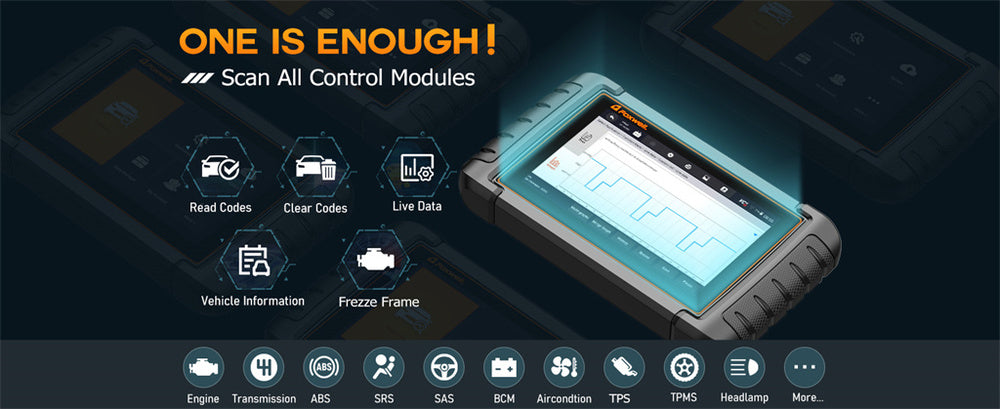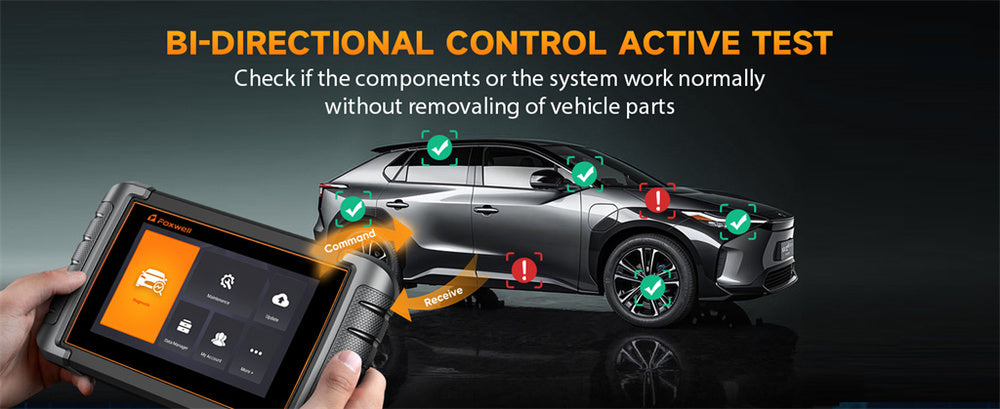Your car's transmission is one of its most essential systems. Still, over time, it may start feeling less efficient, slowing shifts down, or feeling rough when accelerating.
Have you experienced your car hesitating between shifts or feeling rough when accelerating?
A transmission adaptation reset may be in order. That sound you hear could be your transmission attempting to adjust, often because it has outdated data from your driving habits.
Think of it like having too many background apps open on your phone - all it needs is a reset to return to the course.
Here's where transmission adaptation reset comes into play, helping your car relearn your driving style and optimize performance.
Here, we'll go through why and how to perform such a reset and when one might be necessary to run more smoothly and efficiently.
What Is Transmission Adaptation Reset?

Transmission adaptation reset refers to a process in which your vehicle's Transmission Control Module (TCM) is cleared of its adaptive memory over time.
Modern vehicles feature automatic transmission systems that constantly adapt their performance according to how you drive; they store information like how often and hard you press the gas pedal, providing smoother shifts tailored specifically to you as a driver.
As with any system that collects information over time, transmissions can sometimes become bogged down with outdated or conflicting information.
If your driving style has altered or the car has experienced wear and tear, its stored data might no longer provide optimal performance, resulting in delayed shifts, jerking acceleration, or rough acceleration.
By performing a transmission adaptation reset, you clear away that old information and allow the transmission system to start fresh by recognizing current driving habits and adapting accordingly.
Why Should You Perform a Transmission Adaptation Reset?
Resetting your transmission can make an incredible difference to its performance.
Think of it as rebooting a computer that's been bogged down from too many background processes; over time, its memory may get cluttered, leading to rough shifts or an overall slower driving experience.
Resetting allows the transmission to clear away outdated information and begin learning your current driving habits all over again.
This is particularly useful if your driving style has recently changed—for instance, if you switched from highway driving to city streets—or if you have noticed changes in its shifting performance.
Resets also aid new parts in integrating smoothly for seamless shifting performance that improves drivability and helps avoid unnecessary wear on your transmission.
Benefits of a Transmission Adaptation Reset
A transmission adaptation reset offers immediate improvement to how smoothly and responsively your vehicle shifts gears.
After resetting, your transmission learns and adapts to your driving habits again for smoother gear changes - giving your car back its smoothness when acceleration has become complex or uneven. It may make your vehicle feel brand new again!
Transmission resets can also benefit fuel efficiency.
By eliminating overtime gear shifts due to outdated or incorrect data, your engine uses less fuel, and you could see significant savings at the gas station.
Furthermore, resets may help extend transmission lifespan by decreasing wear and tear caused by ineffective shifting patterns, providing your vehicle optimal performance at all times.
Potential Risks of a Transmission Adaptation Reset
While transmission adaptation resets can provide significant advantages, they shouldn't be seen as instant fixes.
After being reset, your transmission needs time to relearn your driving style, which may mean rough or unpredictable shifts during its initial miles of operation - an entirely normal situation but something to keep in mind if you expect immediate performance improvements.
If your transmission is experiencing mechanical problems such as slipping gears or strange noises, a reset will not resolve these underlying issues.
Instead, it's essential that it be examined by a professional to identify if any deeper issues need addressing; resets should only be seen as ways of improving performance when everything else is working correctly, not as solutions for serious mechanical failures.
How to Perform a Transmission Adaptation Reset With an OBD2 Scanner
The easiest way to perform a transmission adaptation reset is by using an OBD2 scanner, and the Foxwell NT1009 is a perfect tool for the job. This scanner offers bi-directional control, meaning it can interact with and reset specific systems in your vehicle, like the transmission control module (TCM).
Here’s a step-by-step guide on how to use the Foxwell NT1009 to perform the reset:
Connect the Scanner to Your Vehicle: Plug the Foxwell NT1009 into the OBD2 port under your dashboard, near the steering wheel. After connecting, turn the ignition to the “ON” position, but don’t start the engine.
Navigate to the Transmission Control Module: Using the scanner’s touchscreen, select the Transmission Control Module (TCM) from the menu. This is where you’ll access the settings for the adaptation reset.
Select Transmission Adaptation Reset: Once inside the TCM, look for the option labeled “Transmission Adaptation” or “Quick Learn.” This will allow the system to erase the old learned data and reset the transmission to its factory settings.
Test Drive the Vehicle: After completing the reset, take your car for a test drive. The transmission will begin relearning your driving habits, so you might notice some rough shifting at first. However, this should smooth out as the system adapts to your style.
With the Foxwell NT1009, this process is straightforward, and the device is compatible with a wide range of vehicles from 1996 to 2022, making it a versatile tool for both professionals and car enthusiasts.

Signs Your Vehicle Needs a Transmission Reset
Are You Uncertain If your car requires a transmission reset? Here are a few indicators:
- Delayed Shifting: If your car takes longer to change gears or is slow during gear changes, a reset may be needed.
- Rough Shiftings: Jerky or stiff shifting may indicate that your transmission has outdated adaptive data, hindering its proper performance.
- Uneven Performance: If your vehicle's acceleration seems unpredictable or it struggles during normal driving conditions, resetting could help restore smoothness to its performance.
Signs such as these indicate that your vehicle's transmission's learning data may no longer be optimal, which requires a reset in adaptation for optimal functioning and responsive driving experiences.
Resetting can make the car more responsive, matching current driving practices better.
Professional Assistance Needed for Transmission Reset
While using an OBD2 scanner is convenient for resetting your transmission, sometimes professional help is required to get things back into shape.
If after trying the reset, your vehicle still seems to have problems, or the transmission has begun slipping, making noises, or showing error codes, it might be time to visit a mechanic, who can perform more in-depth diagnostics and fix any mechanical problems that cannot be solved with just a reset.
Conclusion
Resetting your transmission adaptation system can quickly and effectively boost performance, mainly if your vehicle has been acting sluggish or shifting roughly. Resetting allows your transmission to retrain its learning habits and optimize its performance.
Whether using an OBD2 scanner or visiting mechanic or an OBD2 scanner or visiting mechanic, this reset can extend its life and keep your vehicle running smoothly while controlling costs.
However, while this reset may help resolve many issues, it should never be used as a fix when seeking professional advice; always keep an eye on how it performs and seek professional Assistance if necessary!
FAQs
What does reset TCM adaptation mean?
Resetting TCM (Transmission Control Module) adaptation means clearing the memory that stores learned data about your driving habits and the vehicle’s transmission behavior. By resetting it, the transmission can relearn and adapt to your current driving style, which can help improve performance and shifting smoothness.
How do I reset my transmission control?
You can reset your transmission control using an OBD2 scanner. Plug the scanner into your car’s OBD2 port, access the Transmission Control Module (TCM) settings, and select the option to reset or relearn the transmission. After that, take your car for a test drive so the transmission can start relearning your driving habits.
How do I know if my BMW transmission is bad?
Signs of a bad BMW transmission include delayed or rough shifting, slipping gears, unusual noises like grinding or whining, and warning lights on the dashboard. If you experience any of these symptoms, it’s important to have your vehicle checked by a professional.




Leave a comment
This site is protected by hCaptcha and the hCaptcha Privacy Policy and Terms of Service apply.